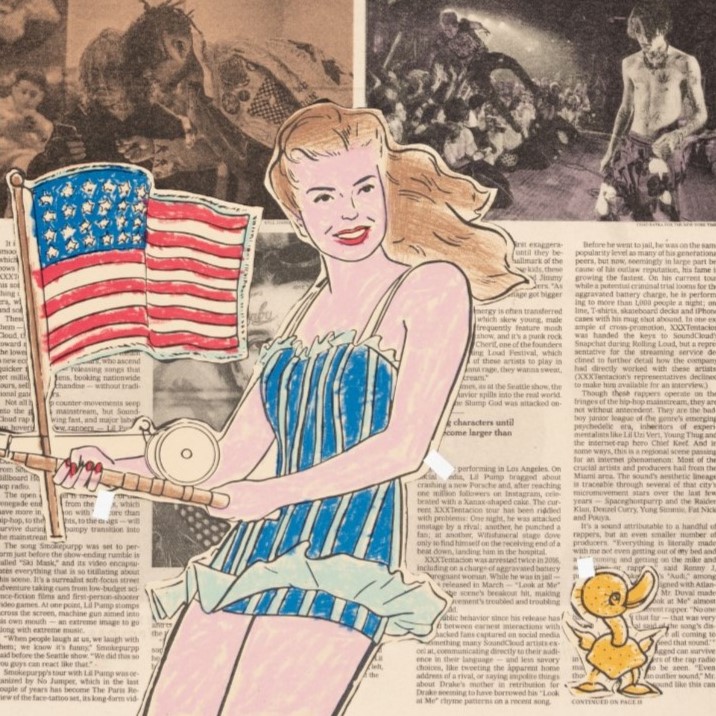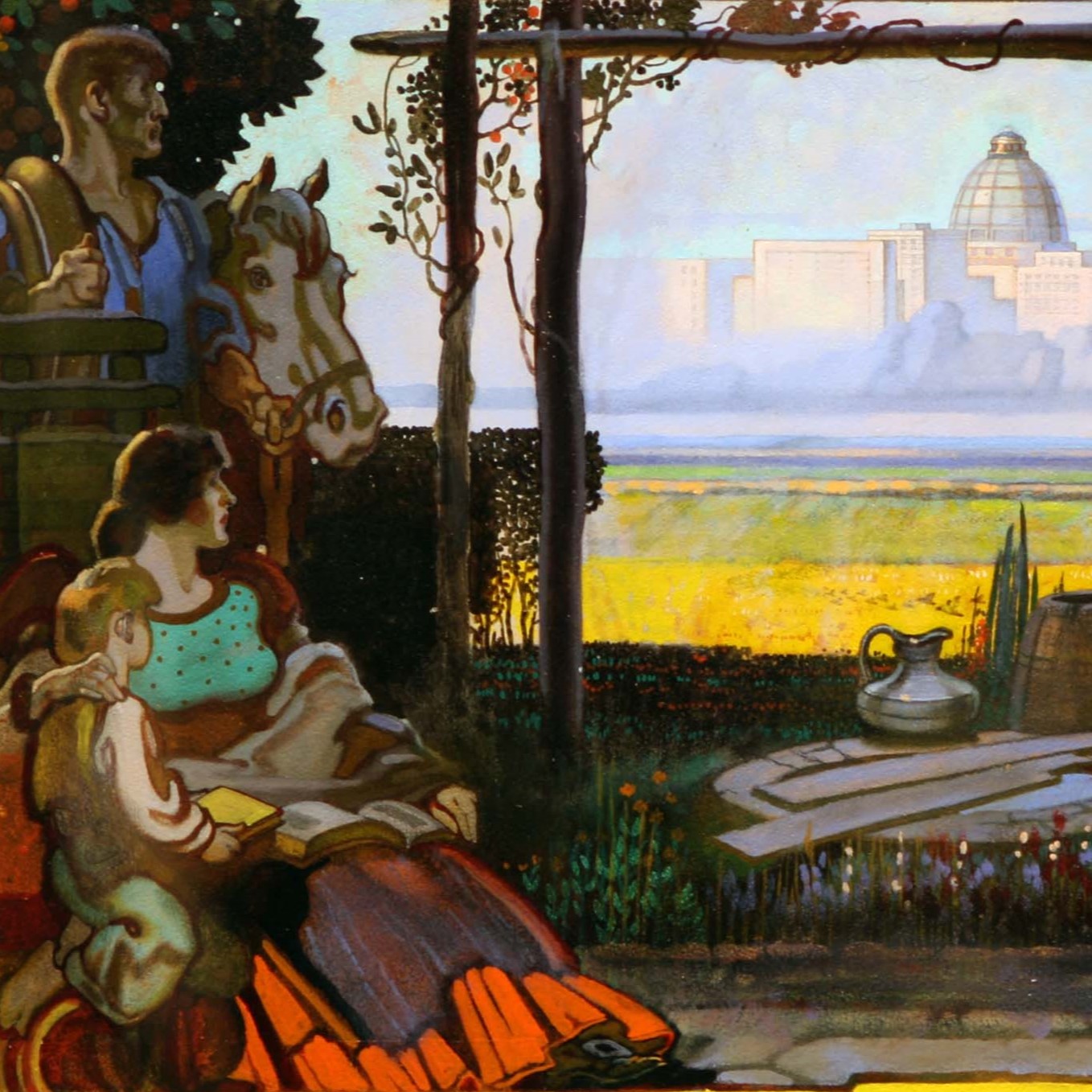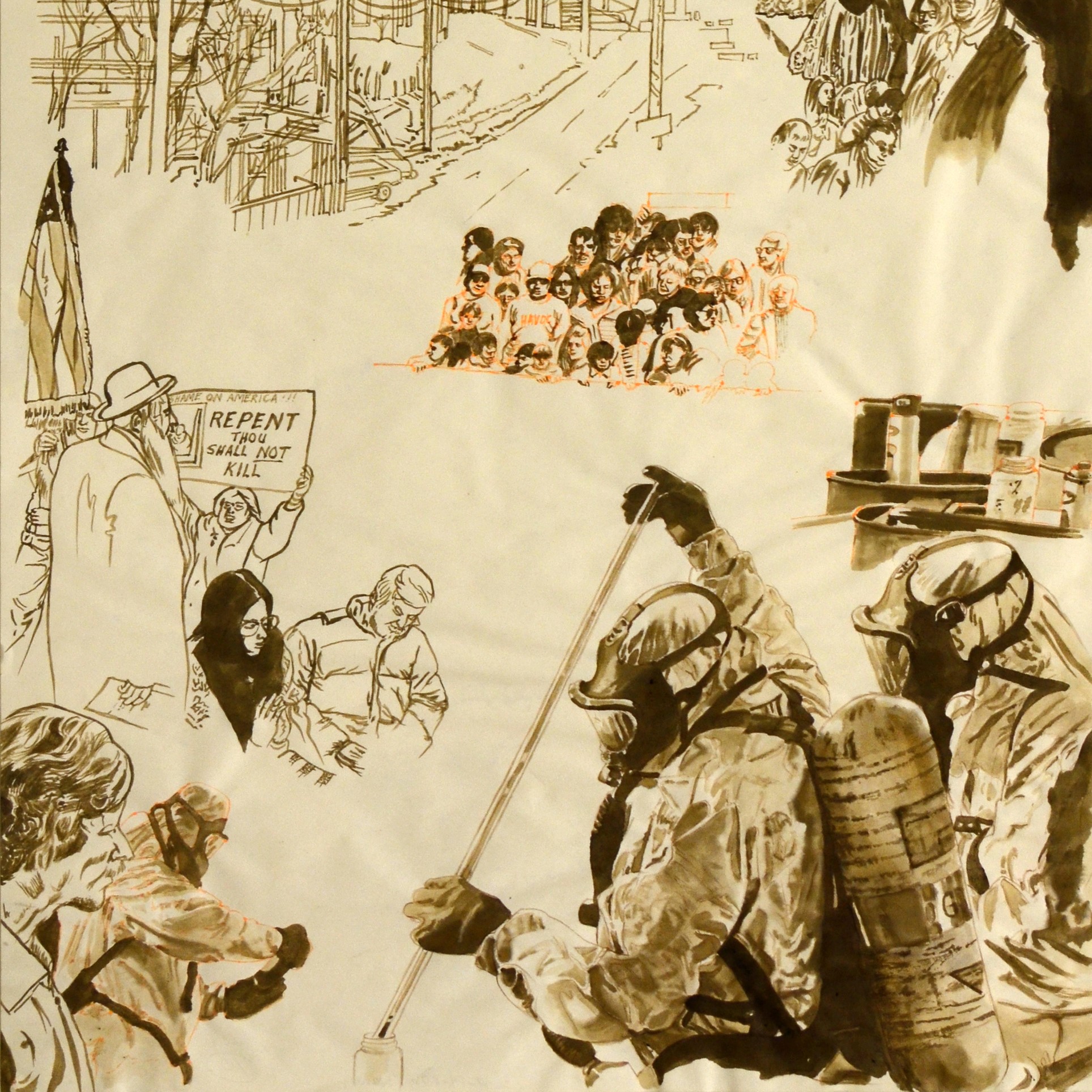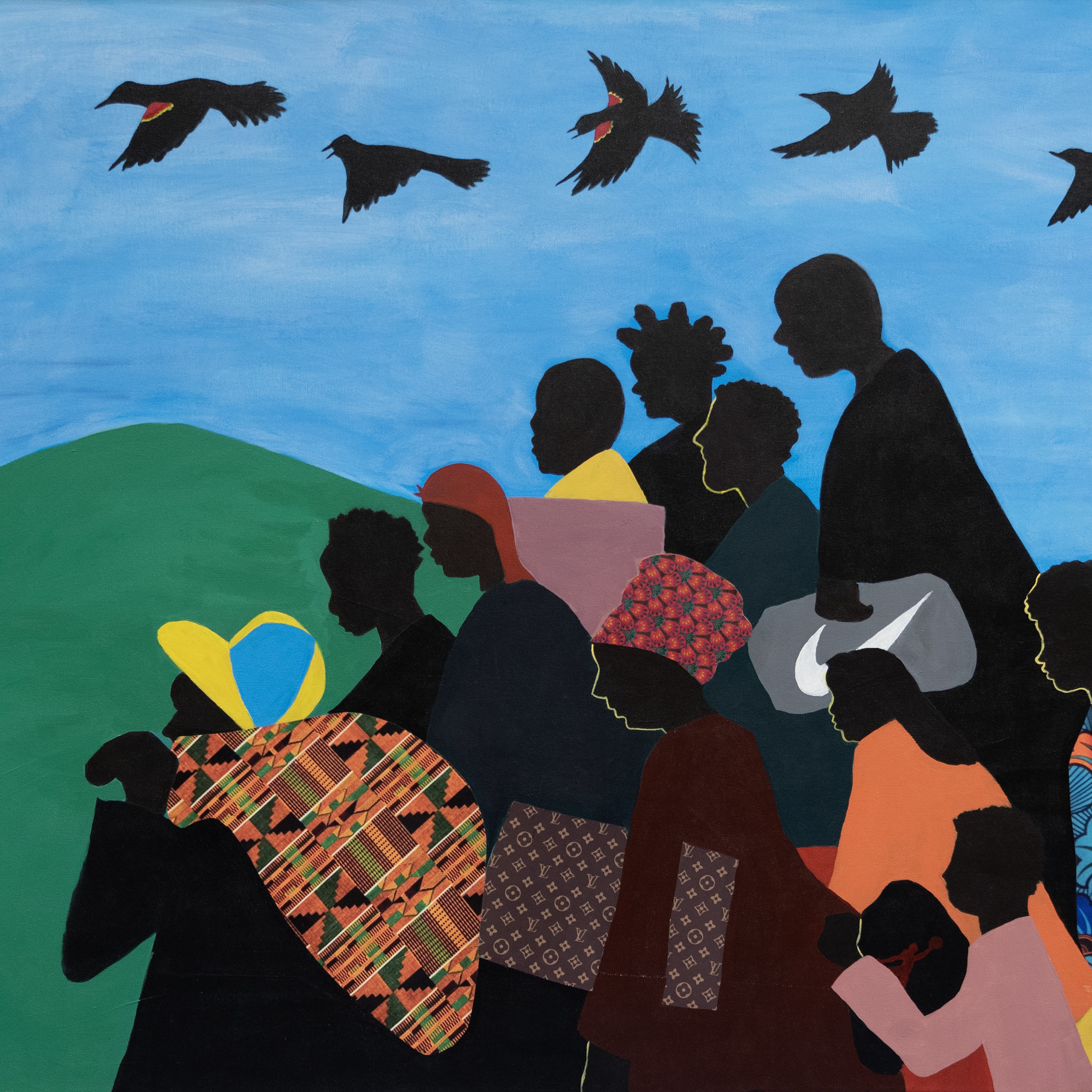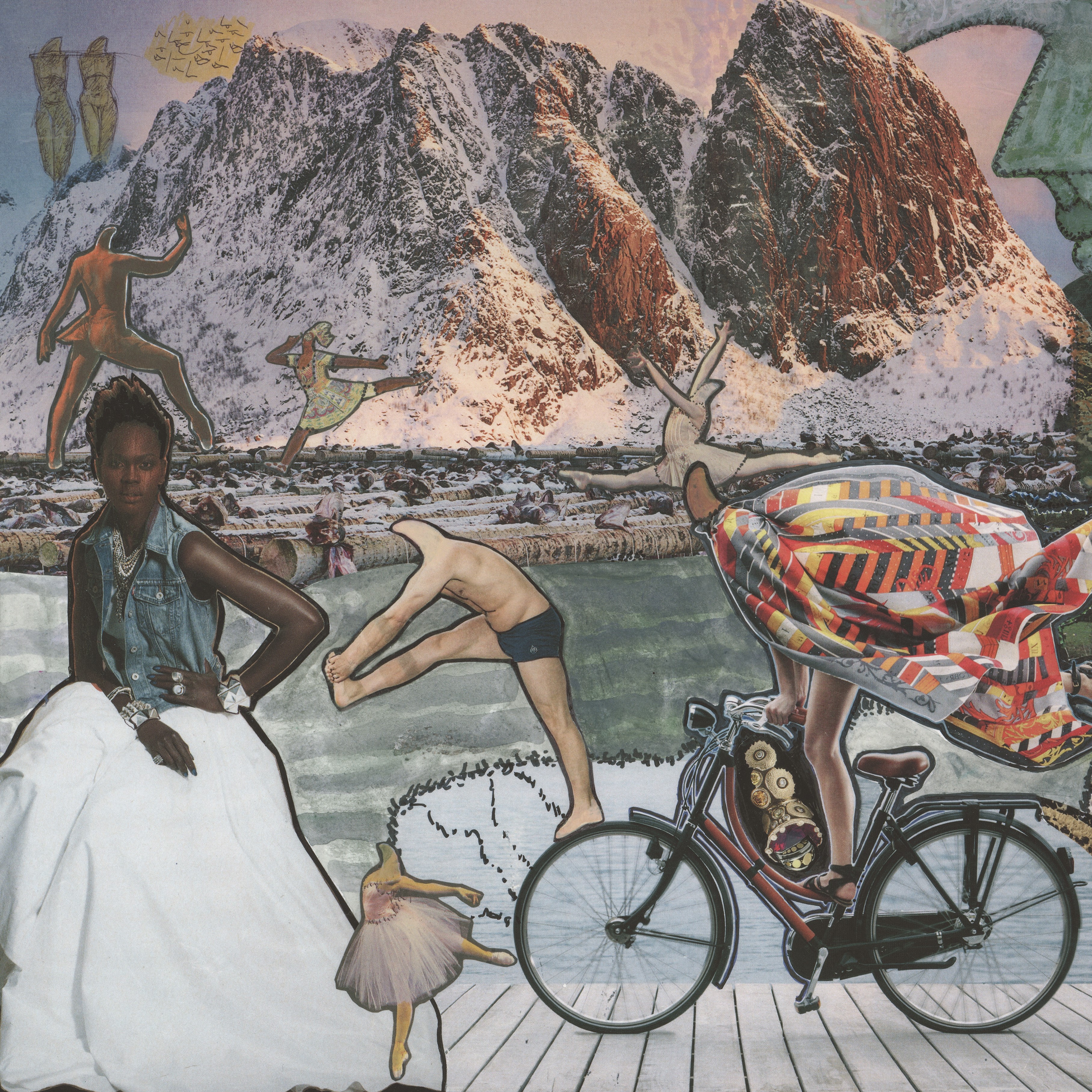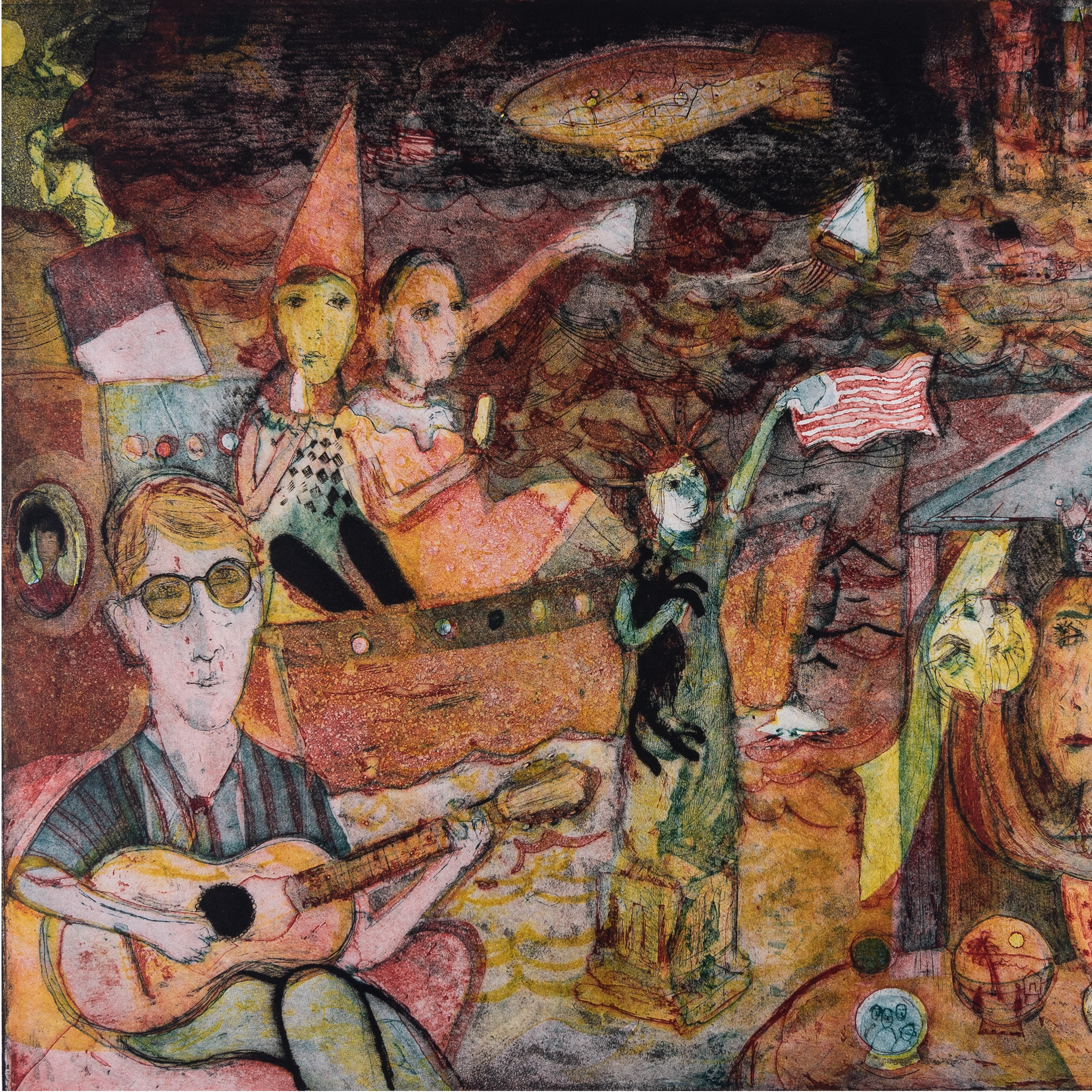Explore more
Members of the community wrote original interpretations of works in the exhibition. Read some of their responses below.
Vision of the Pioneers, c. 1920-50
oil on board
Permanent collection of the Mulvane Art Museum
In David Hicks Overmyer’s Vision of the Pioneers, archetypal white figures stare out over a golden expanse of prairie toward a futuristic view of the city of Topeka. The men are flanked by the beasts of burden that helped to create the vista of fields and buildings on which their gaze is focused. The women, meanwhile, are surrounded by symbols of female industry: children, fabric arts including knitting and quilts, and books likely intended to represent biblical reflection and instruction. It is a beautiful image, a prototype for a proposed mural celebrating the artist’s hometown, the capital of Kansas. The figures are bathed in the golden light of the framing yellow border, and the verdant grassland extends far into the distance. The city, bustling with its large buildings and the new ultramodern dome of the statehouse, rises from the field and becomes one with the heavens. The city, too, is bathed in a prosperous yellow glow. The violence that has been done to the Native peoples and the land itself to create this “vision” of white settler colonialism is missing from the image, except for the presence of a rifle that rests against the quilt in the lower right-hand corner. The aspiration of place evoked here is of an idealized future made possible by a romanticized past.
—Dr. Kelly Erby, Dean of the College of Arts & Sciences, Washburn University
Study for Toxic Eucharist, 1990
ink wash
Permanent collection of the Mulvane Art Museum
This drawing by William Haney focuses on prominent political issues in the United States: abortion rights and energy sources impacting the environment. These topics seem like a weird combination at first glance, but they were both the subjects of intense debate when Haney created this work in 1990, and they continue to have relevance today. Protests and counterprotests about abortion and nuclear power are shown alongside imagery of power plant workers and pill bottles. These contrast each other and provoke the onlooker to think about both issues harder and in a different context. I see a connection between these topics and the issue of safety: the physical safety of the employees of nuclear power plants, the health of people who live around power plants, and the physical and mental well-being of people undergoing abortions as well as people who cannot get abortions.
—Kamryn Dollahon, Washburn University student
A New Migration, 2022
mixed media on canvas
Permanent collection of the Mulvane Art Museum
This work is an adaptation of Jacob Lawrence’s The Migration Series, Panel No. 3. Referencing an iconic painting that documents the Great Migration highlights Black Americans’ continued journey towards liberation. Though much has changed since the Reconstruction and Great Migration periods, the residue and upholding of racism and the mistreatment of Black Americans remain. This piece depicts a vision of achieving liberation through a new migration to rural land where we can build our own communities founded on sustainability, mental wellness, spiritual balance, and healthy food sources. The photo-collaged cityscape highlights contemporary hardships that we aim to escape such as militarized policing, an unhealthy food industry, industrialization, pollution, consumerism, and poverty. The red-winged blackbirds symbolize the dawning of a new beginning, a new awakening, and protection.
—Aisha Imani Sanaa, artist
Gender Scrambling 889: Freedom to Express Everything, 2017
digital print
Permanent collection of the Mulvane Art Museum
Linda Stein’s print focuses on freedom of expression. Although that liberty is enshrined in the U.S. Constitution, the artist’s utopia of gender expression is far from reality. Queer and trans people consistently fall victim to harassment and discrimination in the workplace, schools, from strangers, family, and even by the same government that created the “freedom for all” narrative. However, it’s not impossible for this utopia to become reality. It starts with people in power, large companies, and the government. These entities are so powerful because they are listened to, but what are they saying? For decades, people have had to protest and riot just for equality. If those in power would listen to the people they were designed to serve, the United States could look a little more like the utopia Stein and so many others have imagined.
—Parker Whaley, Washburn University student
